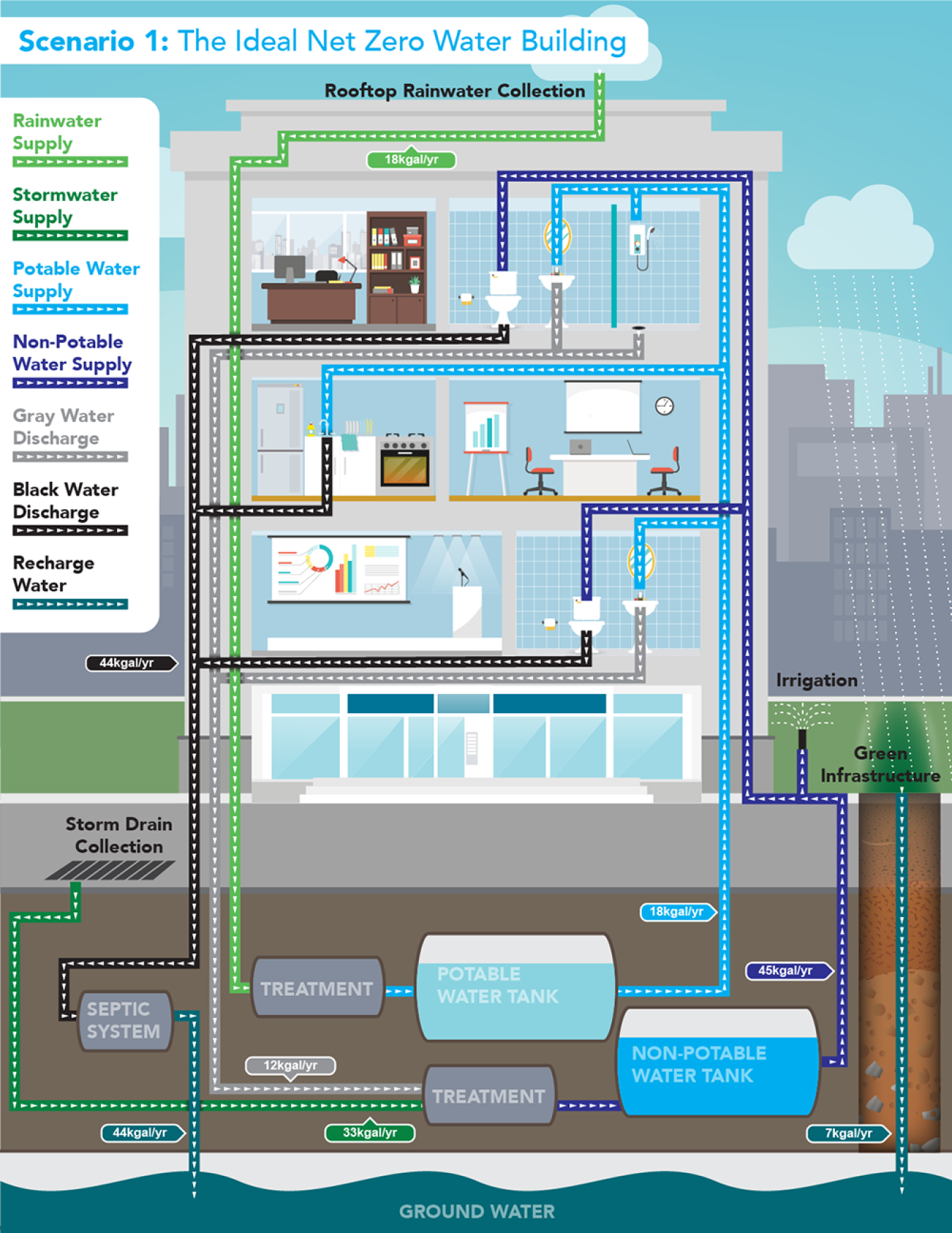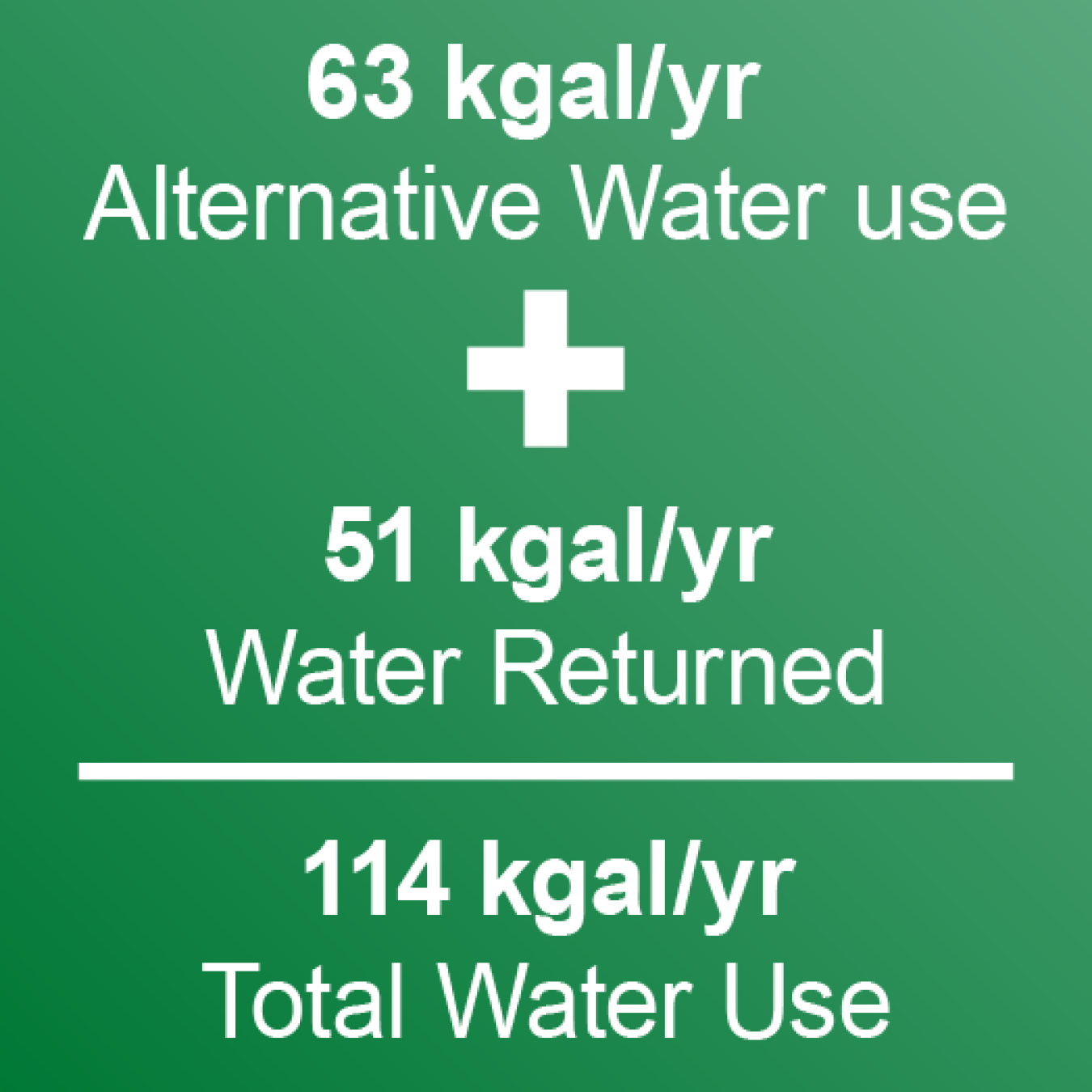An ideal net zero water building uses on-site alternative water sources to supply all of the building's water needs. All wastewater discharged from the building is treated on-site and returned to the original water source.

This graphic shows incoming and outgoing water flows of the building.
- Potable water is supplied and treated on-site from harvested rainwater.
- Alternative non-potable water is supplied and treated on-site from harvested stormwater and graywater, which is lightly contaminated wastewater generated by lavatory faucets and showers.
- Wastewater is treated on-site and returned to the local aquifer.
- Stormwater is recharged to the aquifer through on-site green infrastructure features on the building's landscape.
This building has a surplus of water returned to the original water source, as shown in the equation.

Design Elements of A Net Zero Water Building
Learn about the key design elements of a net zero water building, including:
- Reducing demand by employing innovative technologies that consume less water.
- Producing alternative water sources to offset purchased freshwater.
- Treating wastewater on-site and reuse or inject treated wastewater into the original water supply.
- Implementing green infrastructure by infiltrating stormwater to the original water supply.

